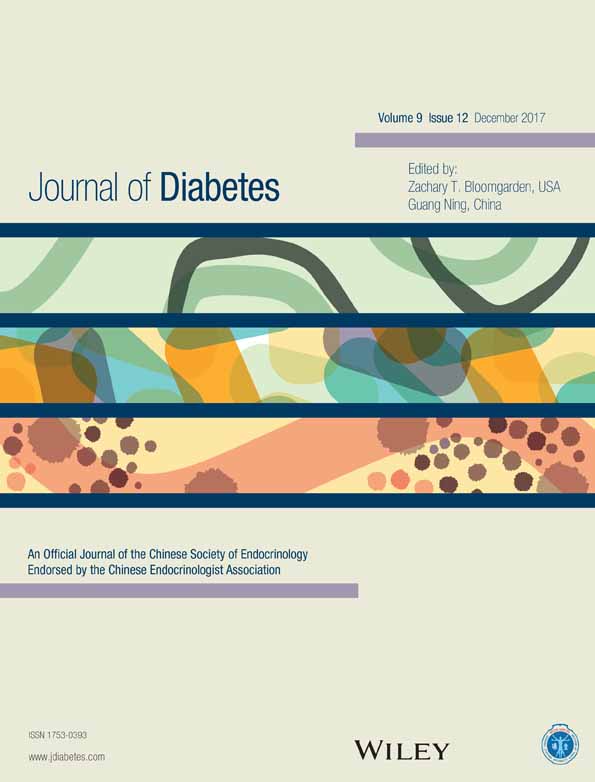Beyond HbA1c
超越HbA1c
It can scarcely be denied that the supreme goal of all theory is to make the irreducible basic elements as simple and as few as possible without having to surrender the adequate representation of a single datum of experience.1
The diaTribe Foundation convened a meeting on the topic of glycemic outcomes beyond HbA1c on 21 July 2017, in Bethesda (MD, USA), focusing on potential uses of continuous glucose monitoring (CGM). Understanding patterns of glycemia in people with diabetes has long been a focus of approaches to improving treatment,2 and over the past few years this has become an available modality for clinical practice.3 Glucose levels are not the only biologic parameters affecting HbA1c levels; HbA1c changes with anemia or, more subtly, with changes in rates of erythrocyte turnover not reflected in hemoglobin levels outside the normal range. Renal disease often is associated with lower HbA1c than would be predicted based on an individual's glycemic levels. Furthermore, HbA1c levels tend to increase with age and are higher in some ethnic groups; for example, people of African ethnicity have higher HbA1c levels than people of Northern European descent.4 Indeed, we have argued that even as a measure of mean glycemia HbA1c is inherently imprecise.5 Overall, for some 20% of people with diabetes, HbA1c levels are substantially higher, or substantially lower, than those that would be predicted from mean blood glucose levels.6
If one recognizes that HbA1c is, at best, a partial measure of mean glycemic exposure, one must surely accept that HbA1c does not reflect variability within a day, from day to day, and from period to period. Many glucose-lowering medicines, particularly the sulfonylureas and insulin, cause hypoglycemia, with consequent negative effects on quality of life and patient-reported outcomes, as well as association with weight gain and adverse macrovascular outcome; hypoglycemia will, of course, not be captured by HbA1c measurement. Based on these considerations, HbA1c may be more limited than generally recognized as a surrogate marker of optimal diabetes treatment, leading the European Medicines Agency to consider relying less on this measure,7 with the implication that novel approaches will be required for clinical practice and for clinical trials in developing future medicines.
In surveys performed by a market research company (dQ&A Market Research, San Francisco, CA, USA) and reported at the Bethesda meeting, among >3000 people with type 1 (T1D) or type 2 (T2D) diabetes both receiving and not receiving insulin, the majority reported a sense that their diabetes care is not very successful and that too much of their time was spent outside the 70–180 mg/dL (3.9–10.0 mEq/L) range. Although self-monitoring of capillary blood glucose (SMBG) is an important tool for patients to use in understanding glycemic excursions, CGM offers a far superior technology in this regard and can avoid the erroneous conclusions often accompanying the use of the inherently indirect measurement of HbA1c. Duration and severity of hypoglycemia may come to be considered important medication efficacy measures, rather than just being considered safety outcomes. Glucose cut-off levels suggested at the meeting may be: <54 mg/dL (3.0 mEq/L) for severe hypoglycemia, <70 mg/dL (3.9 mEq/L) for low blood glucose levels, >180 mg/dL (10.0 mEq/L) for high blood glucose levels, and >240 mg/dL (13.3 mEq/L) for serious high blood glucose levels. An important part of both SMBG and CGM technologies will be the development of data transmission and storage modalities to better provide feedback to people with diabetes and health care providers in adjusting a variety of treatments, as well as their growing use in insulin dose adjustment algorithms; important in such approaches will be the integration of SMBG with CGM to recognize potential measurement errors and to improve the accuracy and assurance of patients and providers that the CGM results are accurate, a particular concern for readings in the hypoglycemia range, but remaining an issue throughout the clinical glycemia range.8-10 However, one must recognize that many commercially available SMBG instruments also fail to exhibit required accuracy,11 and that the indirect relationship between HbA1c and blood glucose suggests that HbA1c is at best limited in its portrayal of glycemic exposure. All these modalities play a role, but the use of CGM appears crucial to the development of better approaches to clinical treatment with multiple views allowing understanding of patterns of glycemic exposure. We look forward to further improvements in this methodology.
几乎不可否认的是,所有理论的最高目标都是要使不可缺省的基本元素尽可能变得简单和精简,同时不必放弃某个单一基准的经验的适当代表1。
diaTribe基金会于2017年7月21日在贝塞斯达(马里兰州,美国)召开了一个主题为超越HbA1c的血糖结果的会议,聚焦于使用连续血糖监测(continuous glucose monitoring,CGM)的潜在获益。长期以来,了解糖尿病患者的血糖谱一直都是改善治疗方法的一个重点2,并且在过去的几年时间里已经成为临床实践的有效模式3。血糖水平并不是影响HbA1c水平的唯一生物学参数;HbA1c会因贫血而有所变化,而且更加微妙的是,它还会随着红细胞转换率而有所变化,而这并不反映在正常范围以外的血红蛋白水平上。与根据患者血糖水平预测的HbA1c相比,肾脏疾病通常都会导致HbA1c更低。此外,HbA1c水平会随着年龄不断增加,并且在某些种族人群中更高;例如,与北欧血统人群相比,非洲种族人群的HbA1c水平更高4。过去也争论过,尽管我们以HbA1c来衡量平均血糖,但在本质上,它并不是很精确5。总的来说,约20%的糖尿病患者的HbA1c水平与根据平均血糖水平预测而来的数值相比显著更高,或显著更低6。
如果我们能认识到HbA1c充其量只能部分衡量平均血糖暴露,那么我们也就必然会接受HbA1c并不能反映一天之中、每天之间以及每个时期之间的血糖变化。许多降糖药物,特别是磺脲类与胰岛素,可以导致低血糖,它们必然会对生活质量以及患者报告的结果造成负面的影响,除此之外还会导致体重增加以及不良的大血管结果;当然,测量HbA1c也不会发现低血糖。基于这些因素,HbA1c的价值可能比较有限,不能将其作为公认的糖尿病合理治疗的替代指标,这导致欧洲药品管理局考虑要尽量少地依赖这一指标7,在临床实践中以及在研制新药的临床试验中需要新的监测方法。
在贝塞斯达会议上报告的由市场研究公司(dQ&A市场研究公司,美国加利福尼亚州旧金山)完成的调查中,纳入了> 3000名接受或者不接受胰岛素治疗的1型或2型糖尿病患者,其中大部分患者认为他们接受的糖尿病治疗并不是非常成功,并且在大部分时间里,他们的血糖都超过了70-180 mg/dL(3.9-10.0 mEq/L)的范围。虽然自我监测毛细血管血糖(self-monitoring of capillary blood glucose,SMBG)是患者了解血糖偏移的一种重要方法,但CGM在这一方面的技术更优越,能够避免使用HbA1c经常带来的错误结论,因为HbA1c本质上是一种间接的测量血糖方法。目前低血糖持续时间以及严重程度往往被认为是衡量药物疗效的重要测量结果,而不仅仅被认为是安全性结果。在这次会议上建议的血糖截点水平如下:严重低血糖为< 54 mg/dL(3.0 mEq/L),低血糖水平为< 70 mg/dL(3.9 mEq/L),高血糖水平为> 180 mg/dL(10.0 mEq/L),严重高血糖水平为> 240 mg/dL(13.3 mEq/L)。作为SMBG以及CGM法的重要组成部分,还需要研制新的数据传输与存储方法,使之能够在调整各种治疗方案或者在越来越多的调节胰岛素剂量的过程中更好地向糖尿病患者以及卫生保健提供者反馈信息;在这些方法中重点是要将SMBG与CGM整合在一起使之能够检测出潜在的测量误差,改善精确度,向患者与卫生保健提供者保证CGM结果是正确的,特别需要关心的是低血糖范围内的读数,剩下的问题就是要覆盖整个临床血糖范围8-10。然而,我们也必须认识到,许多市场上就可以买到的SMBG仪器也不能够达到所要求的精确度11,并且HbA1c与血糖之间的间接关系意味着HbA1c对于衡量血糖暴露值来说,其价值也有限。所有的这些方法都有其适用之处,但是为了从多视角研究更好的临床治疗方法,使用CGM就显得非常重要,它可以帮助我们了解血糖暴露值的特征曲线。我们期待能够进一步改进这种方法。




